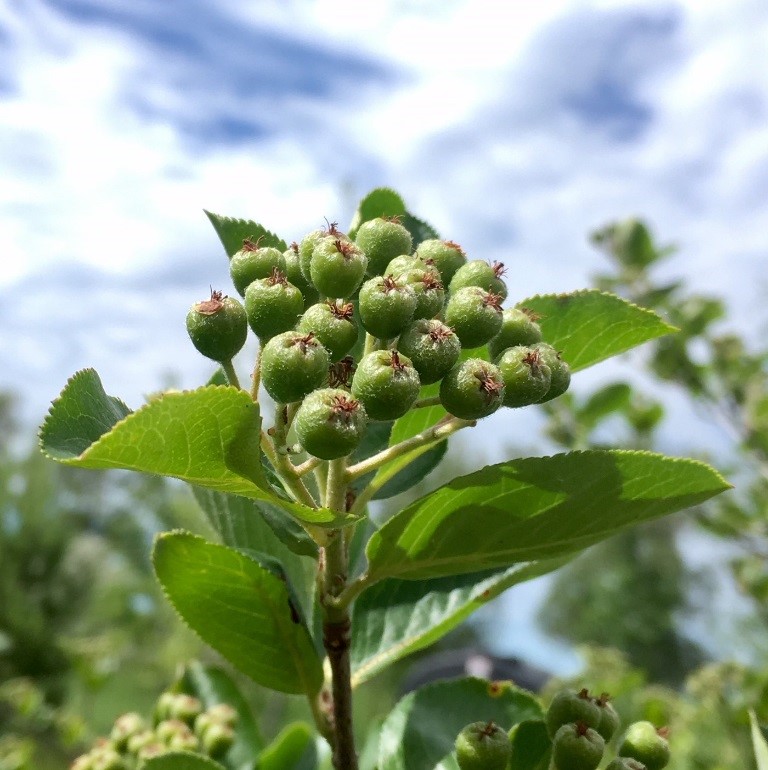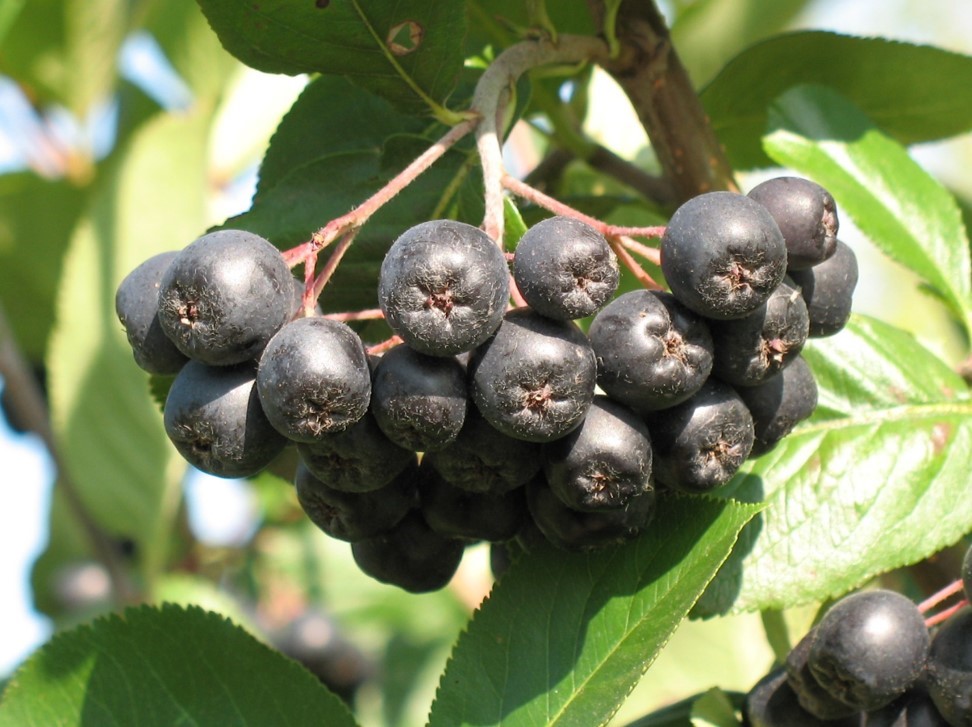Aronia Featured at CREC’s Field Day
Aronia has been a very successful fruit for the CREC and other growers across North Dakota. Right now it looks like a bumper crop with almost all of the flowers setting fruit.
 2018 - Developing aronia crop at the CREC.
2018 - Developing aronia crop at the CREC.
Should you invest in growing aronia? Get more information at the annual CREC Field Day at 9:00 a.m., Tuesday, July 17, 2018, where aronia production will be a featured topic. At 1:00 p.m., we will meet indoors to discuss growing and marketing aronia.
Our invited speaker is Dave Vander Werf, of Sioux Center, Iowa. He grows 15 acres of irrigated Aronia. During the morning field tour, he will talk about aronia production and plant care. After lunch, he will make an indoor presentation about the current realities of marketing aronia berries and finding a buyer.
Aronia fruit has the highest levels of polyphenolic compounds (anthocyanins, flavonols, etc.) that have been measured in any fruit. These nutraceutical compounds are 3-times higher in aronia than in blueberries, blackberries and black currants.
Each year, the CREC fruit project receives inquiries from ND landowners interested in planting a permanent crop to diversify their income. Aronia is a woody crop that does not require intensive management. It is very amenable to mechanical harvesting and is being planted as a cash crop across the Midwest. Aronia growers in ND are very successful with this productive crop. A grower can expect to harvest three pounds of fruit per plant in the third year and 15 pounds per plant after the crop is 5 years old (based on dryland production at the CREC and regional reports).
 CREC aronia berries ready for picking.
CREC aronia berries ready for picking.
Several ND growers recently created and released a fruit-water product called ax-water and other Pride of Dakota businesses make jam, jelly, barbeque sauce and wine from ND fruit. National demand for aronia is surging, with the best prices available from manufacturers of organic, nutraceutical products that contain aronia extracts. North Dakota is well-positioned to enter this market: we have few pests and have growing conditions conducive to promoting high concentrations of polyphenolic compounds in our berries. But what does the real aronia market look like?
We hope to see you here at Field Day, Tuesday, July 17th for our Aronia update.
Kathy Wiederholt
Fruit Project Manager


